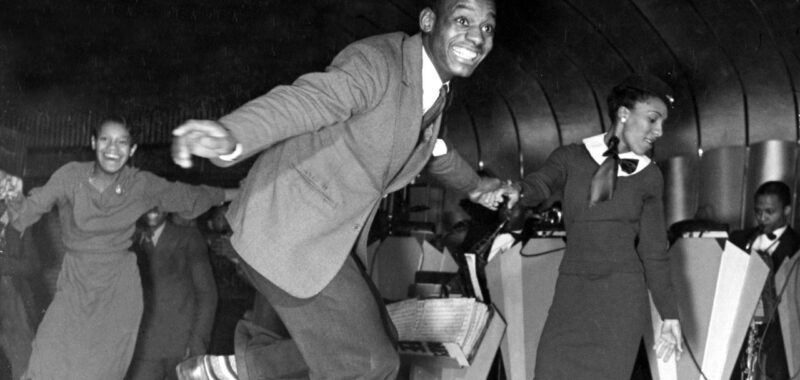These were two of the very few big integrated venues in Harlem, but, as a result of the scarcity of such spots, speakeasies and juke joints flourished. Places like Harry Hansberryâs Clam House on 133rd Street, where transgressive queer performer Gladys Bentley sang and played piano in a white three-piece tuxedo, dotted Harlem. These clandestine spots were tucked away in the basement of a town house or eatery or sometimes deep inside a retail establishment. There would be food, smoking, illicit drinking (during Prohibition), and live jazz music. And although they were smaller and less formal than the large venues, the speakeasies and juke joints were no less of a stage for the dandy. âThis was a moment where people really kind of had fun with their fashion,â art historian Richard J. Powell said. âZoot suits, and dresses with fringes on them, and feathers, if you were inclined that way.â
Literary salons
African American literature also flourished during the Harlem Renaissance. Acclaimed American writers like Langston Hughes and Zora Neale Hurston would often hold readings and parties in the parlor rooms of their residences. The apartments at Sugar Hillâs 409 Edgecombe Avenue were home to countless musicians, activists, and scholars, including W.E.B. Du Bois, who was known for hosting all-night soirées. Among the most famous of the salons were those held at the West 136th Street townhome of AâLelia Walker, philanthropist and daughter of Madame C.J. Walker (who is credited as the countryâs first self-made woman millionaire). An invitation to the four-story dwelling, which combined two town houses, was one of the most coveted tickets at the time. âAâLelia Walker had an apartment that held perhaps a hundred people. She would usually issue several hundred invitations to each party,â Langston Hughes wrote in his 1940 autobiography The Big Sea. These lavish parties attracted Harlemâs creative class and created a safe space for Black dandies to live fully and authentically.
Urban streets
The reputation of New York Cityâs streets as the personal runway for all who walk them is not new. Fashionable New Yorkers have, for centuries, used them as a venue to communicate their sense of style and status to others. Unsurprisingly, this held true for Harlemites living through the areaâs Renaissance. As Miller explains in Slaves to Fashion, the all-black suits worn by the men and the all-white outfits of women and children during the Silent Protest Parade of 1917 spoke volumes; thousands of African Americans marched down Fifth Avenue, intentionally speechless, to make a statement about their identities in a society that often refused to recognize them as legitimate citizens.
On an average day, the blocks around 135th Street in Harlem were where dandyism was truly on display. Artists like Miguel Covarrubias and Charles Henry Altston documented the scene through their work. âOn a Sunday youâd stroll along Seventh Avenue in your best clothes and look over the passing parade of beautiful gals,â Altston said. âThe 135th Street corner was our meeting place.â


